Archive for the ‘Roof Repair 101’ Category
Roof Sheathing Condition
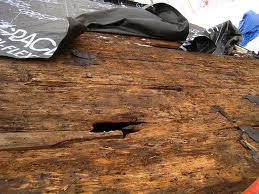
One of the major factors in re-roofing work is the condition of the existing roof sheathing underneath the roof covering. If through the years the sheathing boards have remained basically dry throughout all the areas of your roof you may be able to save money.
Moisture damaged boards will probably need to be replaced. Sometimes you can inspect the condition of your sheathing from the attic. Check any discolored spots for moisture and verify the wood’s firmness. If the boards are easy to penetrate with a screw driver you probably have moisture damage. Soft and soggy boards will need to be replaced.
Loose Nails Could Be Sign of Moisture Damage
The most likely area of moisture damage is in the lower sections of the roof, especially along the eaves. These areas are harder to inspect from the attic space and you will need to inspect the areas from outside the house. If the wood sheathing, fascia or trim have moisture damage and are rotting, sometimes it is easy to see the evidence in the form of loose nails and easy to lift or moving of the materials being probed with the screwdriver.
Rotting sheathing boards mean extensive roof repair work before the re-roofing. New materials won’t last long if placed on top of rotten boards. If different areas of the roof have the soft spots, it is recommended to remove the old roofing material completely and replace the damaged boards with new ones. If the damage appears to be limited to the lower sections of the roof you will not need to remove the old roofing, just the sections on the eaves can be replaced.
Sagging or waves on your roof surface could be the result of aging. In most cases new roof sheathing can me nailed right over the old wavy boards. Ask your roofer or roofing contractor what the condition of your sheathing boards are during the initial inspection or consultation so you won’t be surprised by the additional costs as the job progresses.
Re-Roofing Considerations
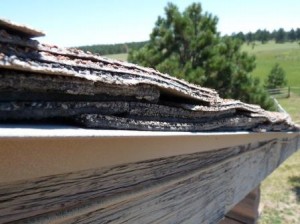 Many people assume that they can cut corners in the cost of roof repair and replacement by simply adding a new layer of roof materials over an existing layer. Although there are some instances in which this may be an acceptable practice, but there are some things to consider before having the job done.
Many people assume that they can cut corners in the cost of roof repair and replacement by simply adding a new layer of roof materials over an existing layer. Although there are some instances in which this may be an acceptable practice, but there are some things to consider before having the job done.
Proceed With Caution
One of the most obvious reasons that having multiple layers of roof materials installed on your home is the potential for safety hazards. Too many layers of roof materials can be heavy, stressing the weight management abilities of the underlying supporting base. For this reason, many states have laws to regulate the number of layers that is approved for a home. Having too many old roof layers under new materials can be a code violation, that could make insuring or selling a home difficult.
Multiple layers also increase the risk of fire and pest problems. Between layers can be great breeding grounds for termites, ants and other pests. In hot or moist temperatures, the multiple layers can also be the base of mold, mildew and toxic growths. Not only are all of these factors potential safety hazards, but they decrease the durability of the materials and increase the need for future maintenance. Further, many manufacturers will consider a warranty null and void if the new roof is damaged due to failure to remove existing layers.
College Students Install New Roof for Training

The carpentry class at Missoula College got hands on training while putting on asphalt shingles onto an elderly disabled woman’s home this week. The 8 second year students became roofers under the direction of Dennis Deneke their teacher. The students fixed the leaky roof for the mobile home owner Mary Steinert who uses a wheelchair to get around.
Three years ago Missoula Housing Authority inspector Norm Verworn had to red tag Steinert’s home for roof damage due to the addition pulling away from the house.
A Gap in the Roof
Verworn said “what had happened was she had a contractor come and put an addition on her trailer house and he didn’t secure it right underneath, over the years, the addition was slowly pulling away on the top from the house, which created a pretty good leak.”
Verworn knew Steinert could not afford to fix the roof so he spent time at lumber yards attempting to get materials to help her out. Verworn said “So in order to keep us from forcing her to move away, I thought it was a better deal to see if we could get volunteer work to repair the roof and keep her there”.
The college students did the labor, Beaudette Consulting Engineers checked out the project. Boyce Lumber donated money and Home depot donated a ridge cap. Missoula College donated flashings and other roof materials for the project.
Deneke said “She’s just thrilled about it, to finally get the problem taken care of. We’re still looking to get the inside taken care of. Since she’s had water for some time, I’m sure there’s mold up in the ceiling.”
Roof Related Replacements
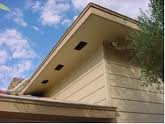
When you have made the decision to re-roof your home it may be the right time to replace some other roof related materials. The common replacements are gutters, downspouts, repairing or replacing the fascia and soffits, vents and insulation.
Deteriorating roof edges must be repaired before new roofing materials can be applied and often times this means removing the gutters. If your gutters are in bad shape, it will be hard to remove them without damaging them further and sometimes they are too bad of shape to try to put back up. If your contractor will be installing new roof drainage system it can be completed the same time as the roofing project.
If the fascia and soffit materials are broken or water damaged they will need to be replaced. Materials include aluminum, vinyl, plywood or hardboard. You can also replace soffit materials with ventilator openings. Regardless of the material used it is generally easier to do a replacement rather than trying to re-cover the damaged areas. Old weather worn areas will not hold a nail well and rotting can easily occur on the back of the boards.
Ventilation in attic spaces helps avoid summer heat buildup and moisture condensation in the winter. The circulation is through intake vents in the lower areas of the attic space, such as soffit vents and then through outlet vents in the upper roof areas.
Your roof contractor can go over these issues with you when you are getting estimates for your roof repair or replacement. By visiting do it yourself building type retail outlets and searching online you should be able to get a good understanding of the products available to you and best for the climate you live in.
Roof Installation Tips
 When it comes time to get a new roof, many homeowners are unprepared for the process. From decision making on materials, to what to expect with a warranty, there are lots of important considerations to make sure the job gets done right.
When it comes time to get a new roof, many homeowners are unprepared for the process. From decision making on materials, to what to expect with a warranty, there are lots of important considerations to make sure the job gets done right.
Do Your Homework
Many people go into the roof replacement process blind. Although you may not be the one performing the task, it is important to know what you want and what to expect. First, do some research in different roof material options. Although you may have traditional asphalt shingles now, you could find that upgrading to a better quality product or even green roofing solution is a good fit for your home. Also, shop around online and in builder material stores to get an idea of prices. Knowing the industry standard for roof materials could prevent you from being overcharged and save you money.
Hire A Professional
Roof repair is not an everyday maintenance task. It is a process that should be handled only by a trained professional. When looking for a qualified roof contractor, start by asking friends and family for referrals. The most honest reviews come from previous customers, so find someone that knows of a company they trust. Check the company’s standings with the Better Business Bureau. It is also important to obtain multiple quotes before choosing a roofer.
Get Documentation
Once you have decided on a roofing company, get proof of their insurance and license. Hiring an uninsured or unlicensed company is never advised, be sure the company you hire can back up their work. After the work has been completed it is important you keep a copy of the work order, receipt of payment and warranty information. If you are going to file a claim or submit the work to your homeowners insurance provider, you will likely need copies of all of these documents.
Roofing Complications

Sometimes just by looking at a roof you can tell which ones will be easier to re-roof than others. For example steeply sloped or pitched roofs can involve special instructions for applying asphalt shingles. The factory applied adhesive works best for lower sloped roofs when the weight of the shingle plus the sun’s heat softens the adhesive and completes the bond. When the roof is steeply sloped you may need additional enforcement of roof cement to help the bonding process.
Roof dormers combined with steep roof slopes further complicate re-roofing efforts. These areas are difficult to climb around and take additional time to fit the shingles around the dormer ridges and valleys. Slips and falls are a strong concern when maneuvering around on a steeply sloped roof, and especially so when you must maneuver around dormers or other protrusions from your roof.
Damaged Sheathing
Other complications arise from the condition of the roof sheathing underneath the roof covering. Moisture damaged and rotting roof sheathing boards means repair work needs to be done in addition to the re-roofing. New roofing materials won’t last very long if applied to damaged boards that won’t hold nails.
Even if there is no moisture damage there can still be sagging in the sheathing from old boards. In most cases you can use longer nails to put the new sheathing material up over the old wavy sheathing boards.
How steep your roof slopes and if there is any sheathing damage should be a strong deciding factor in choosing to re-roof your home yourself or hiring an experienced roofing company to do the job.
Roofing Terminology

When talking with roof contractors or material suppliers it is advisable to know a little roofing jargon. Confusion could be a costly mistake if you are unaware what you are agreeing to.
The “ridge” is the top edge where two sloping roof surfaces meet. “Valley” is a downward sloping juncture of two roof surfaces that are at right angles with one another. “Hip” is the downward sloping ridge like juncture of two roof surfaces on an outside corner of the building.
“Coverage” is another common term used in connection with application of roof materials. “Single coverage” is roofing material designed for used with minimal lapping so most of the area of the roof is a single layer. “Double coverage” is where the strips shingles lap just over half of their width, and the roof will have two layers of shingles over most of the area.
Exposed to Weather
“Exposure” is the amount of a roofing product left exposed to the elements.
“Coursing or “courses” refers to horizontal stretches of the roofing. If the strips are applied so that their butts line up horizontally, a single layer of stretch of shingles is called a “course”.
The lower part of the roof is called the “eaves” and the outward facing is the “fascia” and underside is the “soffit”.
“Square” is a common term used in the roofing industry, it simply means 100 square feet used as an area of roof measurement. When you order roofing materials, you obtain sufficient amounts to be applied on so many squares of roof. Materials are usually bundled or packaged so that a certain number of packages will cover a square.
These are by no means all the terms you will encounter when discussing your roofing project but they will give you a basic understanding of the general roofing terms.
Decisions for a New Roof
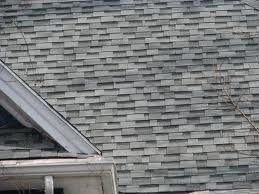
Repairing a leaking roof often means installing a whole new roof. A homeowner’s decision to put on a new roof often takes into consideration the existing exterior, eliminating maintenance and cost and availability of roofing materials. Other reasons can be to improve the homes appearance and increase the value of their home.
Trending in the roofing industry is to improve the home’s energy efficiency as well as keeping the home safe and dry. Among the considerations are the immediate results such as reducing the heating and cooling costs as well as long term effects on landfills and the heat island effect in many cities.
Do It Yourself Types
Choosing a contractor or deciding to do the re-roofing yourself can also be a big decision. You may very well be capable of doing the work yourself, but oftentimes it is more cost efficient to hire a crew to do the work in terms of time loss from work and the demanding physical aspects to roofing a house.
There are more choices than ever in roofing materials. The standard asphalt shingles now come in thicker and heavier varieties with a choice of colors never offered before. Depending on the climate where you live, slate, clay or concrete tiles are another option. In fire prone areas people are getting away from wood shakes and shingles and replacing them with more fire retardant roofing materials.
With the advent of technology, you can now buy concrete tiles that “eat” smog, glass type shingles that run channels of water underneath to keep the home warmer, and shingles with photovoltaic cells to harness the sun’s rays for electricity.
Talking with your roofing contractor and discussing the features that you want will help you in making the decisions easier when it comes time to putting a new roof on your home.
Winterizing A Roof
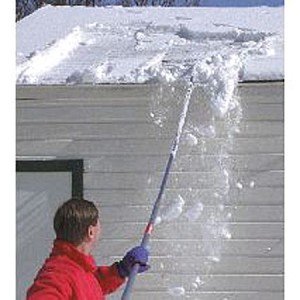 As the temperatures drop it is important to pay close attention to specific parts of your home to avoid problems next spring. For many people, the checklist of winterizing a home includes making sure pipes are clear and dripping to prevent water from freezing, covering plants from the frost or snow, and making sure doors and windows are sealed correctly. What many people often overlook is any need for roof repair or maintenance.
As the temperatures drop it is important to pay close attention to specific parts of your home to avoid problems next spring. For many people, the checklist of winterizing a home includes making sure pipes are clear and dripping to prevent water from freezing, covering plants from the frost or snow, and making sure doors and windows are sealed correctly. What many people often overlook is any need for roof repair or maintenance.
Making The List
A properly maintained roof can reduce damage and problems down the road, saving thousands in avoidable repair costs. When it comes to winterizing a roof, it is important to do the following:
Inspect the roof — look for obvious signs of damage like broken or missing shingles, loose flashing or warped underlayment. You may even want to hire a roof contractor to take deeper look into the integrity of your roof before that big snowfall hits.
Clean the roof — make sure the roof is free from debris, pests and plant materials. These materials can compromise the integrity of a roof and lead to further damage when severe weather strikes. Existing buildup of these materials is likely to increase the weight on the roof, making it less able to support additional weight like ice or snowfall.
Check the ventilation — roof vents are often overlooked by homeowners and can easily become clogged, causing air to buildup in the attic. If the attic cannot properly vent the insulation can become compromised that leads to additional heating costs.
Needing repairs while snow or ice is coming down is not any fun. Properly carrying out some basic winterization techniques can save you a lot in the long and the short run.
New Roof Tax Breaks
 Part of the appeal in owning a home versus renting are the tax deductions for certain aspects of homeownership. Many people get into a mortgage loan thinking their new ownership will bring thousands of dollars in tax savings and it can, just not necessarily in all the areas you may hope for.
Part of the appeal in owning a home versus renting are the tax deductions for certain aspects of homeownership. Many people get into a mortgage loan thinking their new ownership will bring thousands of dollars in tax savings and it can, just not necessarily in all the areas you may hope for.
Home Tax Deductions
The costs of roof replacement can run upwards of $10,000. Unfortunately, the cost of a new roof does not qualify for an IRS tax deduction. Many people assume maintenance costs are deductible from tax bills, and the fact is they simply aren’t. There is an exception to this rule, which is if the costs of roof repair or replacement are related to a disaster. Many of the affected Hurricane Sandy victims will likely be eligible to write-off any out of pocket expenses related to repairing and rebuilding their homes.
There is also another silver lining, the costs of replacing a roof directly adds to the value of the home. The increased home’s value then raises the tax basis of the home, which can influence the amount of deductions allowed on other aspects of the home. The higher home value could also lower the amount of capital gain taxes charged at the time of selling the house. In this way, the costs of replacing a roof can be looked at as an investment, and one that provides lesser known benefits.






